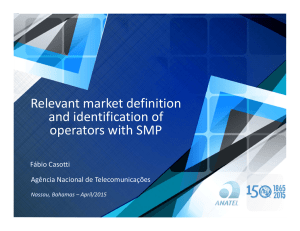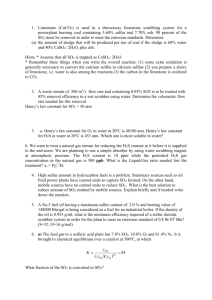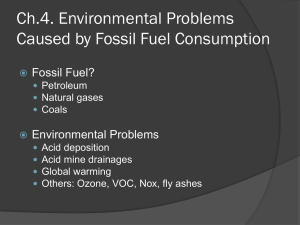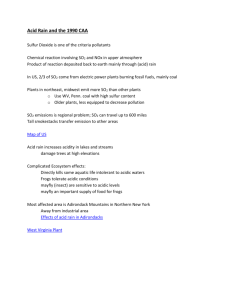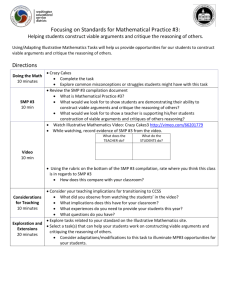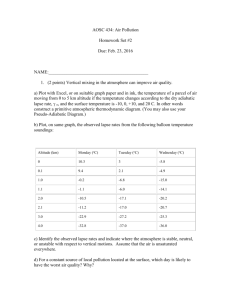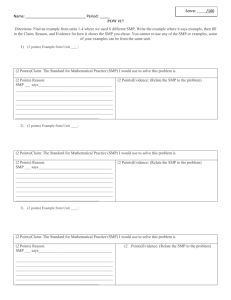Competition in the Italian telecommunications markets
advertisement
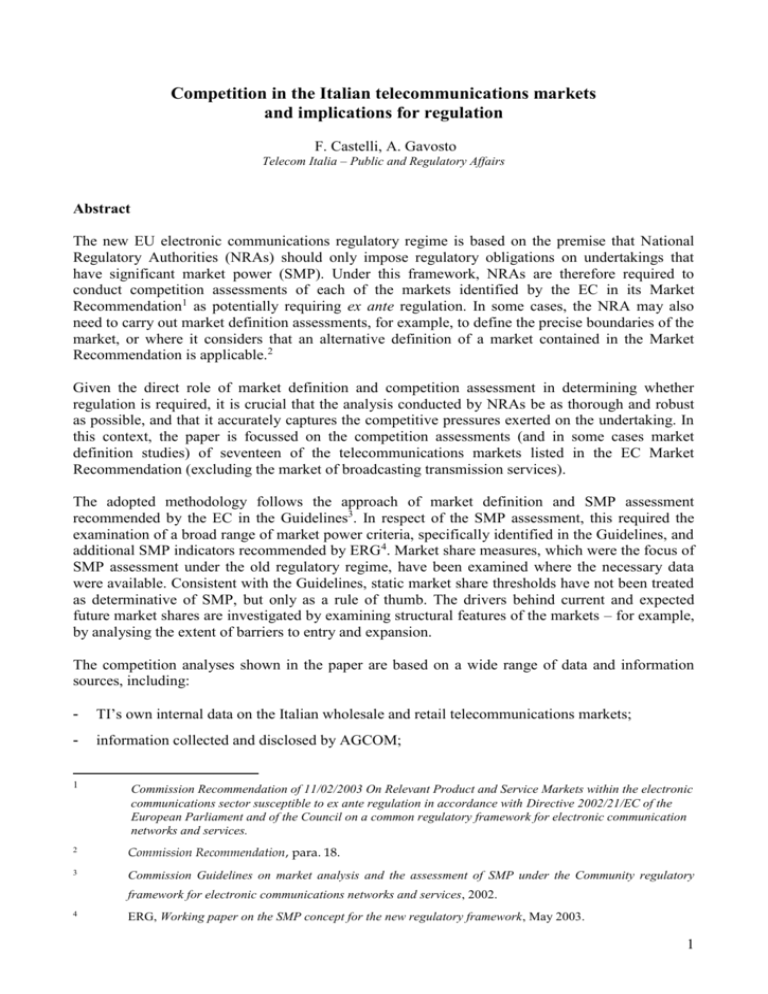
Competition in the Italian telecommunications markets and implications for regulation F. Castelli, A. Gavosto Telecom Italia – Public and Regulatory Affairs Abstract The new EU electronic communications regulatory regime is based on the premise that National Regulatory Authorities (NRAs) should only impose regulatory obligations on undertakings that have significant market power (SMP). Under this framework, NRAs are therefore required to conduct competition assessments of each of the markets identified by the EC in its Market Recommendation1 as potentially requiring ex ante regulation. In some cases, the NRA may also need to carry out market definition assessments, for example, to define the precise boundaries of the market, or where it considers that an alternative definition of a market contained in the Market Recommendation is applicable.2 Given the direct role of market definition and competition assessment in determining whether regulation is required, it is crucial that the analysis conducted by NRAs be as thorough and robust as possible, and that it accurately captures the competitive pressures exerted on the undertaking. In this context, the paper is focussed on the competition assessments (and in some cases market definition studies) of seventeen of the telecommunications markets listed in the EC Market Recommendation (excluding the market of broadcasting transmission services). The adopted methodology follows the approach of market definition and SMP assessment recommended by the EC in the Guidelines3. In respect of the SMP assessment, this required the examination of a broad range of market power criteria, specifically identified in the Guidelines, and additional SMP indicators recommended by ERG4. Market share measures, which were the focus of SMP assessment under the old regulatory regime, have been examined where the necessary data were available. Consistent with the Guidelines, static market share thresholds have not been treated as determinative of SMP, but only as a rule of thumb. The drivers behind current and expected future market shares are investigated by examining structural features of the markets – for example, by analysing the extent of barriers to entry and expansion. The competition analyses shown in the paper are based on a wide range of data and information sources, including: - TI’s own internal data on the Italian wholesale and retail telecommunications markets; - information collected and disclosed by AGCOM; 1 Commission Recommendation of 11/02/2003 On Relevant Product and Service Markets within the electronic communications sector susceptible to ex ante regulation in accordance with Directive 2002/21/EC of the European Parliament and of the Council on a common regulatory framework for electronic communication networks and services. 2 Commission Recommendation, para. 18. 3 Commission Guidelines on market analysis and the assessment of SMP under the Community regulatory framework for electronic communications networks and services, 2002. 4 ERG, Working paper on the SMP concept for the new regulatory framework, May 2003. 1 - market research surveys of retail customers; - data on the development of telecommunications markets in other countries; and - information on the development of competitive infrastructure in Italy. As a consequence, the paper also provides a rich source of data and information, which may be of interest for researchers and experts in the field of telecommunication economics and regulation. The paper is primarily focused on market definition and the assessment of SMP, but also provides some remarks on the implications of the SMP analysis for the application of regulatory remedies proposed by the new EC telecommunication package. The paper is organized as follows: - section 2 provides an integrated view of the characteristics of the Italian telecommunications markets and the development of competition across all of the markets listed in the EC Recommendation; - section 3 summarizes on a market-by-market basis the main findings of the SMP analyses; and - section 4 presents authors’ view concerning the implications of the competition analyses on the NRA’s market review and regulatory remedy assessment processes. - section 5 provides summary and concluding remarks. 2
